More about: 10 Things to Do in Kyoto in February
The city of Kyoto, the ancient capital of Japan, is now considered its cultural center, and one of the most important cities in the country. In the month of February, there are many things to see and do in Kyoto, and many reasons to bundle up and go out to discover all that this fascinating city has to offer.
From colorful and meaningful festivals to gardens that surprise with their plum trees, through dances and rituals to ward off demons, or even curious celebrations like the National Cat Day, the month of February is certainly a very interesting time to visit this city and want to come back every year.
1. Enjoy the beautiful flowering of the plum trees
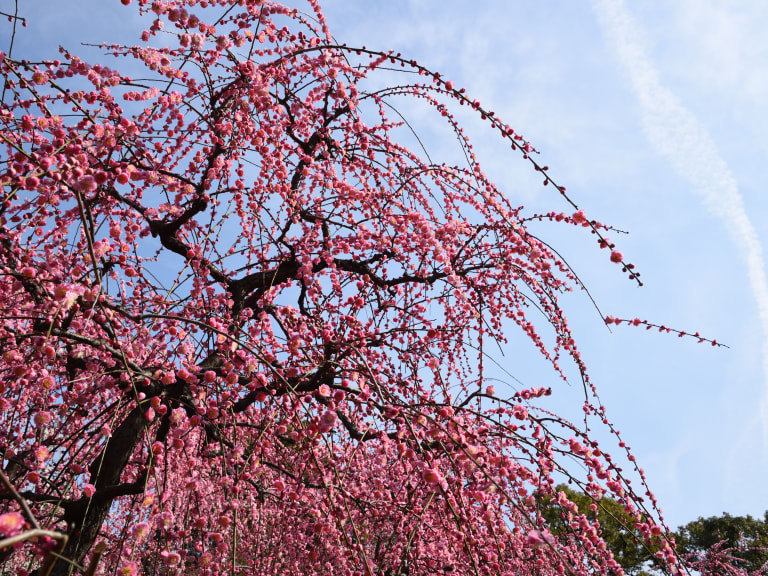
The cherry blossom is one of the most incredible spectacles of nature to be seen in Japan, which is why in spring many people visit this country. However, a little earlier in the spring, plum trees bloom in Kyoto, and their blossoms are just as beautiful as those of the cherry trees.
Plum trees, or ume in Japanese, bloom in Kyoto in mid-February, and are also much anticipated by the locals. When these trees bloom, they are filled with numerous flowers of various colors, such as pink, red or white, which perfume the streets of the city. Plum blossom occurs in Setsubun, a period that coincides with the end of winter in Japan.
When the plum blossoms bloom is an ideal time for you to visit the temples of Kyoto, whose gardens acquire a very particular beauty. These include Kitano Tenmangū Shrine, Zuishin-in Temple, Nijo Castle and Jōnangū Shrine, among many others.
In addition, plum trees are used to prepare gastronomic delicacies such as umeboshi, the salted dried fruit, which is used to accompany various dishes such as rice, and umezuke, which is the dried fruit. If you take a cooking class in Kyoto, you will surely taste ume in many typical dishes.
2. Attend a special tea ceremony at the Baikasai
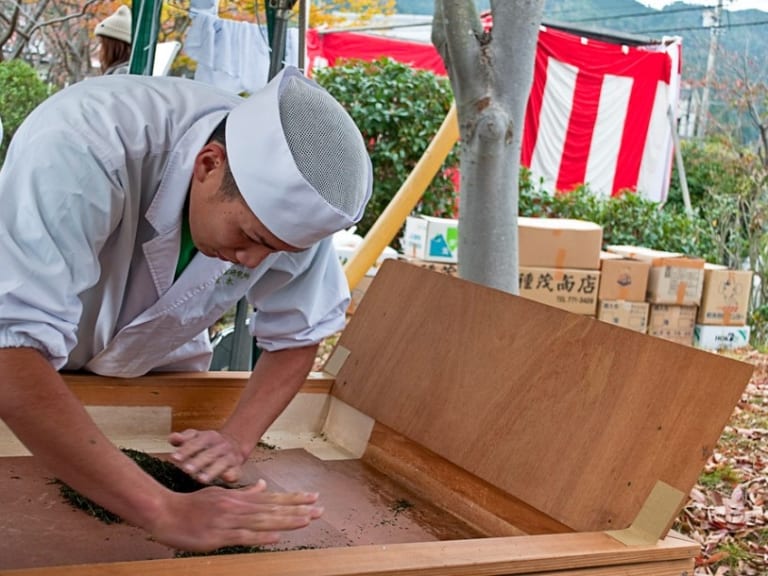
Every February 25 in Kyoto, the Baikasai, or Plum Blossom Festival, is held at Kitano Tenmangū Shrine. It is a festival celebrating the plum blossom, with a special tea ceremony that geishas and maiko, their apprentices, perform outdoors under the enchantment of the blossoms.
The Baikasai is the most important festival related to the plum blossom that takes place in Japan. Its origins go back to a politician and poet who wrote a poem saying goodbye to plum trees during his exile, which would have inspired many people to plant plum trees at the Kitano Tenmangū shrine, which is why there are so many in that place.
The festival is a great opportunity for you to participate in this traditional tea ceremony, and contemplate the elegance of the geisha and maiko in one of the most beautiful shrines in Kyoto. Participate in these ceremonies or go in search of plum blossoms, certainly should be part of one of your tours of Kyoto during the month of February.
As for the Kitano Tenmangū, it is one of the oldest Shinto shrines in the city, and is very close to the unmissable Golden Pavilion temple, which you can also take the opportunity to visit that day.
More information about Kitano Tenmangū
- Location: Kitano Tenmangū Temple, Bakurocho, Kamigyo Ward, Kyoto.
- Days and hours: February 25 from 10 am to 3 pm approximately.
- Admission fee: entrance to the temple is free, but witnessing the tea ceremony costs about 8 EUR. Tickets begin to be sold one month before the festival at the shrine.
- How to get there: from Kyoto station you can take a half hour bus ride to Kitano Tenmangū-mae station.
3. Celebrate Japan's National Foundation Day in Kyoto
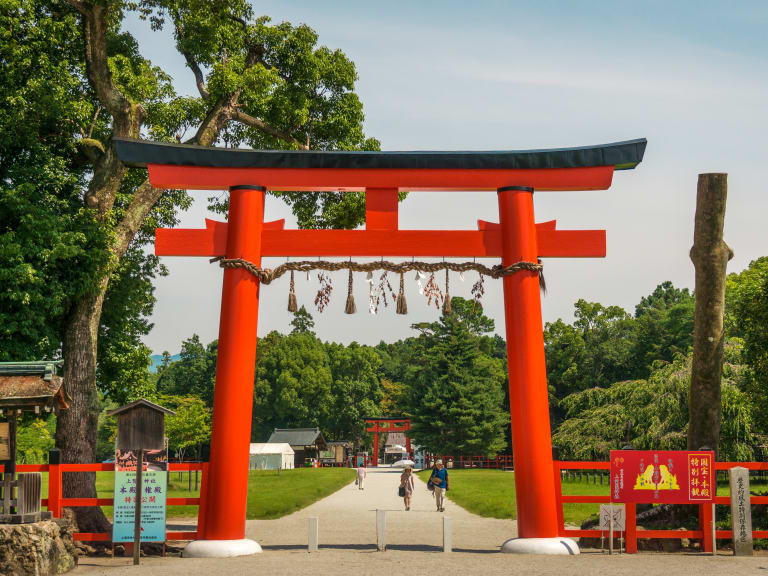
In February, a festival of great importance for the Japanese is celebrated: the National Foundation Day, or Kenkokukinen No Hi, which is held every year on February 11. It is one of the few patriotic celebrations held in the country, when the beginning of the imperial family is commemorated with the ascension to the throne of the first emperor Jinmu.
On this special day, the city dresses up with events and activities for all citizens and visitors. The city's parks, shrines and temples are decorated in the colors of the national flag and offer dancing, recreational activities, music and traditional Japanese foods.
Compared to other festivities held in Japan and Kyoto, it is a simple celebration where you will see the city filled with Japanese flags, with each citizen carrying their own. You will also be able to witness the flag raising at different points in the city and appreciate military shows in public spaces.
Please note that on National Foundation Day many museums and temples in Kyoto will be closed, as it is a public holiday throughout Japan. However, it is a good time to take a tour of the city of Ky oto and learn how the city experiences this celebration.
4. Taste the best Japanese winter gastronomy
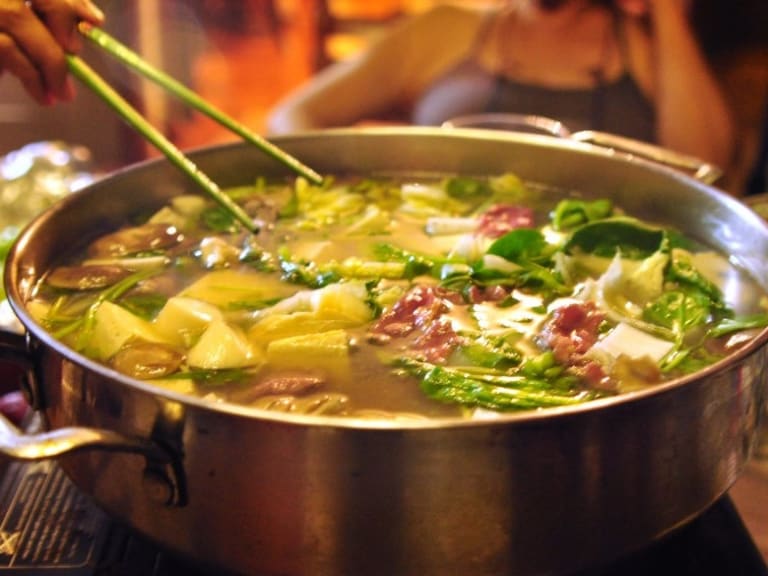
In February, the Japanese take advantage of the winter to prepare the most exquisite dishes such as soups, sauces and hot broths to alleviate the cold. One of the favorite gourmet dishes is Shabu Shabu.
It is a special dish consisting of vegetables and raw meats, traditionally beef, but can also be prepared with crab, chicken, pork, duck or lobster. These are served with a ponzu sauce, a sauce is very similar to vinaigrette, which is prepared with citrus juices, soy and dashi, a fish stock.
In addition, this dish is usually accompanied with dare gum, which is made from sesame seed and is creamy, or with steamed rice. It is customary for the Japanese to mix the rice with leftover dashi broth. Undoubtedly, it is a dish that you can try in one of the best gastronomic tours in Kyoto.
Other Japanese dishes to mitigate the cold are the hot pot, a con with a variety of ingredients; the Yosenabe, made with a broth based on seaweed; and mochi or Japanese rice cake. Undoubtedly, enjoying traditional Japanese hot dishes is one of the best things to do in Kyoto in winter.
5. Discover Setsubun: the eve of spring at Yasaka Shrine
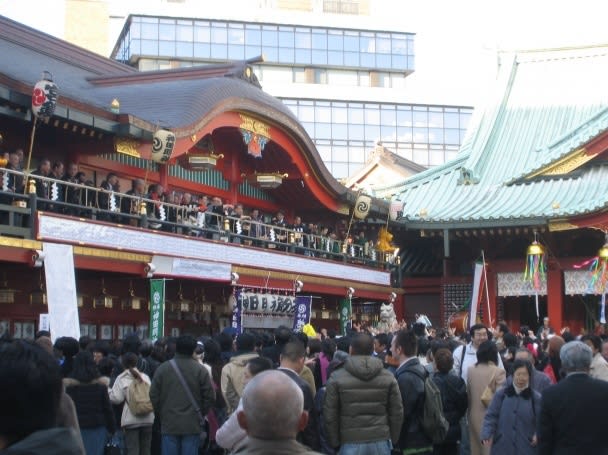
In the first days of February, for two consecutive days, Setsubun, a festival celebrating the end of winter and the arrival of spring, is held at all the shrines of the city. On this occasion, the maikos and geikos (geisha apprentices) dance and throw bags of soy beans to the public, to ward off bad fortune and disease.
In Kyoto, the most representative shrine to experience Setsubun is the Yasaka, where the maikos and geikos of the four districts of the city perform different dances, depending on the district to which they belong. This display of dances and beautiful kimonos is undoubtedly a unique and enchanting spectacle, and one of the most interesting cultural performances in Kyoto.
During this festival, you can buy beans and lucky charms, and eat a red bean soup that would serve the same purpose. There is also usually a raffle, where all tickets have a prize.
As for Yasaka, it is a Shinto shrine of the seventh century where the Gion Matsuri, the most important of the city, is celebrated. It is a must-see temple, which is usually included in any 2-day itinerary in Kyoto. Attending this festival is a great opportunity for you to get to know this temple and the Gion district, known as the geisha district.
More information about the festival
- Location: Yasaka Shrine, 625 Gionmachi Kitagawa, Higashiyama Ward, Kyoto.
- Days and hours: February 2 and 3 from 11 a.m. to 4 p.m. approximately.
- Admission fee: free of charge.
- How to get there: from Kyoto station you can take a bus to the Gion stop, or take a train that leaves you 600 meters from the temple.
6. Practice snow sports in the surroundings of Kyoto
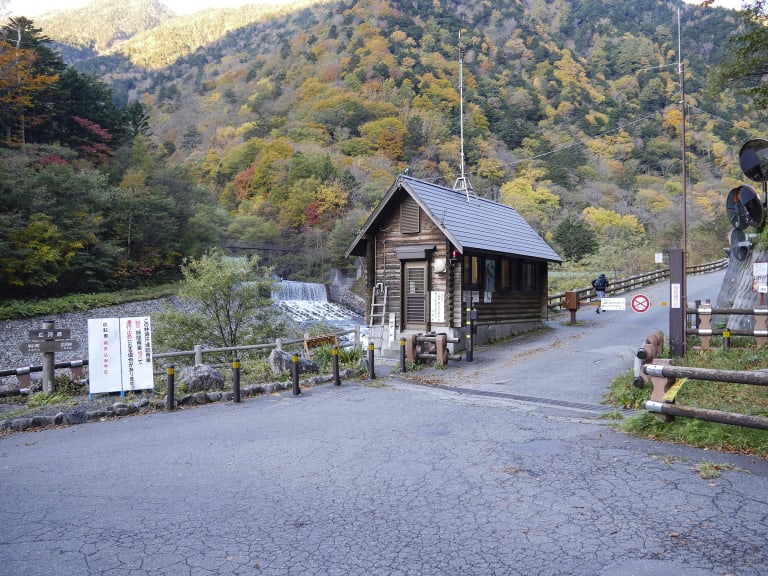
In February, Kyoto city is covered with snow and the weather is ideal for winter sports and activities. Near the city there are several ski and snowboard resorts, such as Hirogawara, where you can go tobogganing, one of the most fun activities. Visiting this resort, located one hour from the city, is one of the best excursions to do from Kyoto.
At Hirogawara Resort, you can rent a sled and do this fun activity with your family or friends. Children can also play in the snow, or ski, as there are ski lessons for children and adults who are just starting out. Without a doubt, enjoying the snow is one of the best things to do in Kyoto with children in February.
In addition, there is a hut at the resort that offers drinks and food so you can rest for a few hours before returning to the city. Before going to the resort, check on their website the status of the slopes and the route, to verify that it is open and you can reach your destination.
More information about the resort
- Location: 286 Hirogawaraobanacho, Sakyo Ward, Kyoto.
- Days and Hours: Usually open on Saturdays and Sundays from 10 am to 4 pm, but due to snowfall the hours may change suddenly.
- Admission fee: adults 8 € and children up to 12 years, 4 €.
- How to get there: from Kyoto terminal you can get there in about 2 hours by public transport.
7. Be amazed at the Agon No Hoshi Matsuri or Festival of Fire Rites
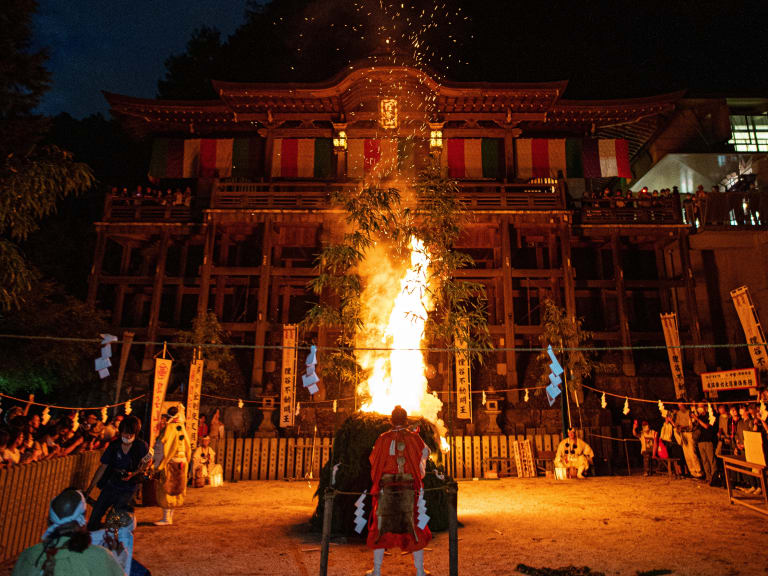
The Agon No Hoshi Matsuri is a festival held every year on February 11 in the Yamashina district, which is located east of Kyoto. It is a celebration that is consecrated to the stars of destiny, honmyojo and tonenzokusho, to ask for happiness and world peace.
During this festival, large processions are held and Buddhist relics and statues are displayed, and you can participate in various activities such as fortune telling. But the most impressive part of the festival is undoubtedly the burning of thousands of ancient prayer sticks on two giant pyres, in order to ward off bad luck.
The burning of the sticks is accompanied by music, drums and very original dances, which you can see from a short distance away. It is a little known festival and crowded by tourists, but it is undoubtedly one of the best :::link|text=cultural activities in Kyoto|element=sc-182-1390:::, where you can connect with the most ancient of this culture.
More information about the festival
- Days and hours: February 24 from 9:30 a.m. to 3:30 p.m. approximately.
- Admission fee: free of charge.
- How to get there: from Kyoto station you can get to Yamashina district station in 15 minutes.
8. Pamper cats on their National Day
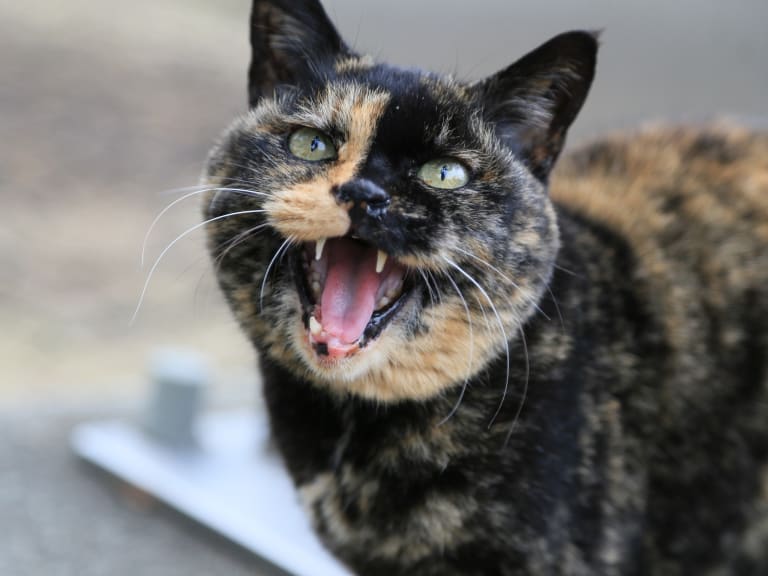
On February 22 every year, National Cat Day, or Neko no Hi, is celebrated in Japan. Apparently, the sound of this date, which is 02/22, sounds very similar to the cats' meowing (nyan nyan nyan nyan) so they decided to establish the celebration on this date a few decades ago.
During this day, sweets are decorated with cat faces, and restaurants and cafes offer food and shapes decorated with this special theme. Also stores offer products inspired by the little felines, such as stuffed animals or pillows, and offer discounts on those products.
It is a day when Japanese people pamper their pets, and upload photos of their cats in costumes, especially kimonos, to social networks. Many people make reservations several days in advance at one of **Kyoto'**s cat cafes, such as Neko Café Time, where the kittens are the real masters of the place. It's certainly a good time to buy some cat-shaped cake and enjoy the cheerful decorations in stores and restaurants.
9. Experience Valentine's Day the Japanese way in Kyoto
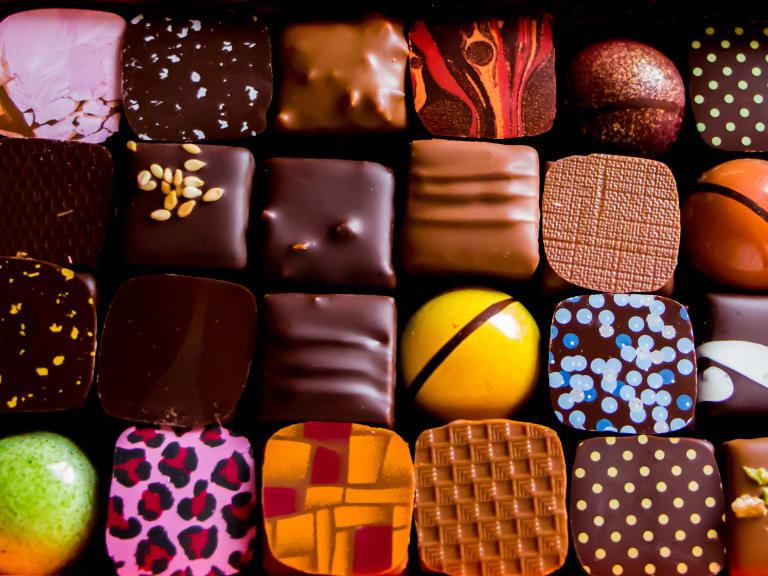
Japan, as a cosmopolitan country, has incorporated the celebration of Valentine's Day like so many countries around the world. However, this celebration, which was established by the Morozoff candy company in 1958, has merged with Japanese culture and adopted its own imprint.
During Valentine's Day in Japan, it is customary to give chocolate as a gift, but not only to the couple, but also to friends or relatives. In addition, only women give them to men, since it is their turn in March, on "White Day". For this reason, you will see that the stores are decorated in a special way.
The chocolates, depending on the type, have different messages for their recipients, such as honmei choko, which are given to the person in love; giri choko, which are given as a courtesy; or tomo choko, which are given to friends. But, if buying chocolate does not appeal to you so much, you can take advantage of this date to go to the Kiyomizudera temple and check your luck in love.
When you arrive you will find the well-known "love stones" found there. Tradition has it that you should touch one and then walk with your eyes closed to the other, which is at the other end. If you succeed, it means that you will find love soon, or that you have found the love of your life.
10. Travel to Tokyo to celebrate Emperor's Day
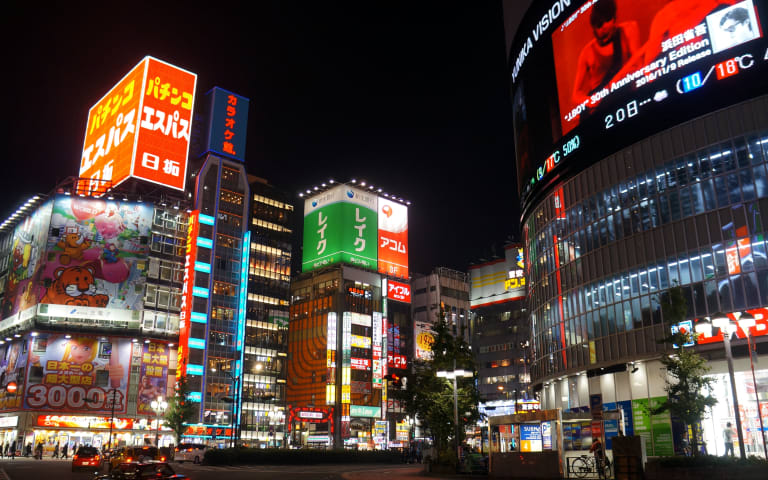
Every February 23 is celebrated in Tokyo the birthday of Emperor Naruhito, after his birth date was determined (February 23, 1960). Previously it was celebrated on December 23, the day of the birth of his predecessor Akihito.
It is a huge celebration known as Tenno Tanjobi and is held at the Imperial Palace in Tokyo, the residence of the emperors. To get to Tokyo, you can take the bullet train, which arrives in about 2.5 hours, and take advantage of some of the best tours of Tokyo.
The entrance to the Imperial Palace normally has a cost, but on this holiday it is free for everyone. In addition, it is the only time of the year when you can access the gardens. During the celebration, the emperor salutes from the balcony, and citizens greet him waving their flags. Other members of the imperial family are also often seen on the balcony.
If you wish to participate in this celebration, it is important that you attend only with a handbag, as they usually check the bags and backpacks of people who are going to enter the Palace garden, in order to protect the life of the emperor.
More information about this event
- Location: 1-1 Chiyoda, Chiyoda City, Tokyo.
- Days and hours: February 23.
- Admission fee: free.
- How to get there: from Kyoto City you can get there in about 5 hours by car via Shin-Tomei Expressway/Second Tokai Expressway. The bullet train is the fastest means of transport (about 2 hours and a half) to get to Tokyo.




